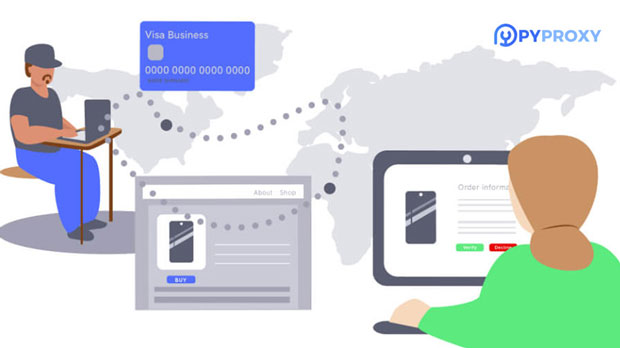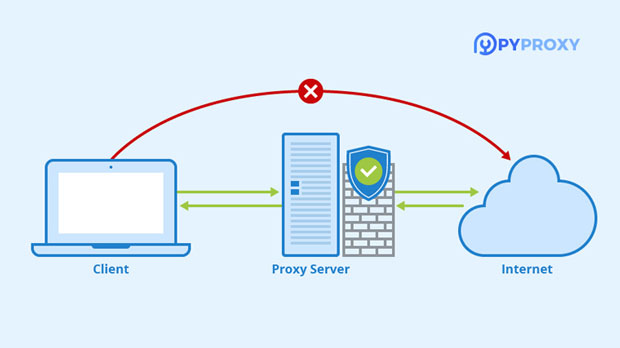In the world of data crawling, proxies play a crucial role in ensuring anonymity, preventing IP blocking, and maintaining smooth operations during large-scale data collection. PYPROXY and Proxy Omega are two popular proxy solutions, both known for their effectiveness in handling various crawling tasks. However, when compared, each has its strengths and limitations, depending on the specific use case. This article will explore and compare the performance of PyProxy and Proxy Omega, considering key factors such as speed, reliability, security, and ease of use, providing valuable insights for users seeking the most suitable proxy solution for data scraping. Introduction to Data Crawling and the Need for ProxiesData crawling involves systematically collecting data from various online sources, typically through automated bots. Given the vast amount of information available on the web, businesses, researchers, and developers often rely on web crawlers to gather valuable insights. However, this process comes with significant challenges, especially concerning IP blocking, data access restrictions, and maintaining anonymity.Proxies are essential tools in this context. By routing requests through multiple IP addresses, proxies help users bypass blocks and ensure smooth and uninterrupted crawling. This makes proxies an indispensable part of any successful data scraping operation.What is PyProxy?PyProxy is a popular proxy solution designed to enhance the efficiency and anonymity of data crawling tasks. It is primarily known for its flexible configuration options, robust security features, and ability to handle high volumes of requests efficiently. PyProxy works by managing a pool of IP addresses, providing users with the ability to switch between them seamlessly, which is crucial for bypassing IP blocks during extensive web scraping.One of the standout features of PyProxy is its high degree of customization. Users can configure the proxy service according to their specific needs, such as rotating IP addresses at set intervals or using specialized proxies for particular websites. Additionally, PyProxy supports various proxy types, including residential, datacenter, and mobile proxies, offering greater flexibility for different scraping tasks.What is Proxy Omega?Proxy Omega is another robust proxy solution that is widely used in the data crawling industry. It is known for its high performance and reliability, especially when it comes to handling large-scale data scraping operations. Proxy Omega offers a variety of proxy types, including dedicated, shared, and residential proxies, and is designed to cater to a wide range of user requirements, from individual developers to large enterprises.One of the key strengths of Proxy Omega is its advanced anti-detection measures, which help users avoid being blocked by websites. It employs advanced algorithms to rotate IPs automatically, ensuring that the crawling process remains smooth even when dealing with sophisticated anti-bot measures implemented by websites. Furthermore, Proxy Omega offers a user-friendly interface and robust API support, making it accessible for both beginners and advanced users.Comparing PyProxy and Proxy Omega: Key Factors1. Speed and PerformanceWhen it comes to speed and performance, both PyProxy and Proxy Omega have their merits. PyProxy is highly configurable, which allows users to optimize their scraping speed based on the type of proxies they are using. With proper setup, PyProxy can maintain high-speed crawling even with large volumes of data.On the other hand, Proxy Omega is designed for scalability and can handle massive volumes of requests with minimal latency. It is particularly well-suited for large-scale operations where speed is crucial. The automatic IP rotation system of Proxy Omega helps to minimize the chances of throttling, ensuring a smoother data collection process.In terms of speed, Proxy Omega generally outperforms PyProxy in high-demand scenarios due to its optimized infrastructure and advanced proxy management tools. However, PyProxy can still hold its ground with proper configurations tailored to specific use cases.2. Reliability and StabilityReliability and stability are essential when choosing a proxy solution, especially for long-term data crawling operations. PyProxy is known for its reliability, provided users configure the system correctly. Its robust architecture allows it to handle a substantial number of requests without significant downtime. However, like any system, its stability largely depends on the proxies it uses and the quality of the IP pool.Proxy Omega, in contrast, is recognized for its exceptional stability, even under high traffic conditions. The service guarantees minimal downtime and fast recovery times, which makes it a more reliable option for mission-critical tasks. Proxy Omega also provides monitoring tools to track performance, helping users identify and resolve issues quickly.When considering reliability, Proxy Omega generally offers better performance out of the box, thanks to its infrastructure designed to ensure uptime and consistency.3. Security FeaturesSecurity is a top priority in data crawling, as users need to protect their identity and avoid detection while collecting data. PyProxy offers robust security features, including encrypted connections and advanced IP rotation methods that help protect users from detection. The ability to configure proxies for specific tasks adds an additional layer of security.Proxy Omega also prioritizes security with its encrypted connections and built-in anti-censorship tools. It uses advanced detection evasion techniques to mask the origin of traffic, ensuring that users' actions remain anonymous. Moreover, Proxy Omega offers the option to use residential proxies, which are harder to detect compared to datacenter proxies, adding another layer of security.In terms of security, both services are competitive, but Proxy Omega’s emphasis on detection evasion and residential proxy options might give it an edge for highly sensitive scraping tasks.4. Ease of Use and Customer SupportEase of use is an important factor for both beginner and advanced users. PyProxy, with its flexible configuration options, may require a steeper learning curve for new users. However, it provides in-depth documentation and community support to assist users in setting up and optimizing their systems.Proxy Omega, on the other hand, is known for its user-friendly interface, making it accessible to those who may not have extensive technical knowledge. Its straightforward setup and easy-to-navigate dashboard make it a great choice for users looking for a hassle-free experience. Additionally, Proxy Omega offers responsive customer support, providing timely assistance to resolve any issues that arise.For users who prioritize ease of use, Proxy Omega may be the better option, while PyProxy could appeal to those with more advanced technical skills who require a higher degree of customization.5. Pricing and Value for MoneyPricing is often a deciding factor when selecting a proxy solution. PyProxy offers a more affordable pricing structure, particularly for smaller-scale operations. The flexibility in choosing the types of proxies and the configuration options makes it a cost-effective choice for those who require tailored solutions.Proxy Omega, while slightly more expensive, offers more advanced features and superior performance for large-scale data scraping projects. It provides greater value for users who need high availability, scalability, and robust support.Ultimately, the choice between PyProxy and Proxy Omega comes down to the specific needs of the user. For smaller projects, PyProxy may provide sufficient performance at a lower cost, while Proxy Omega is better suited for larger, more demanding scraping operations.Both PyProxy and Proxy Omega are powerful tools for data crawling, offering unique features and advantages. PyProxy is highly customizable and offers a budget-friendly solution for users with specific proxy needs, whereas Proxy Omega excels in performance, reliability, and security, making it a great choice for large-scale operations. By understanding the strengths and weaknesses of each, users can make an informed decision about which proxy solution best meets their needs for data scraping.In summary, choosing between PyProxy and Proxy Omega depends on the scale of the project, budget, and specific requirements, such as speed, reliability, and security. Both proxies are excellent options in their respective niches, ensuring users can successfully navigate the challenges of data crawling.
Mar 31, 2025
![arrow]()


























































